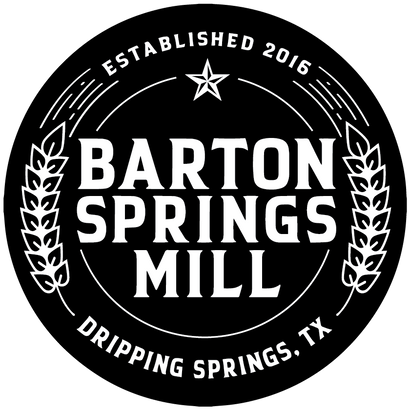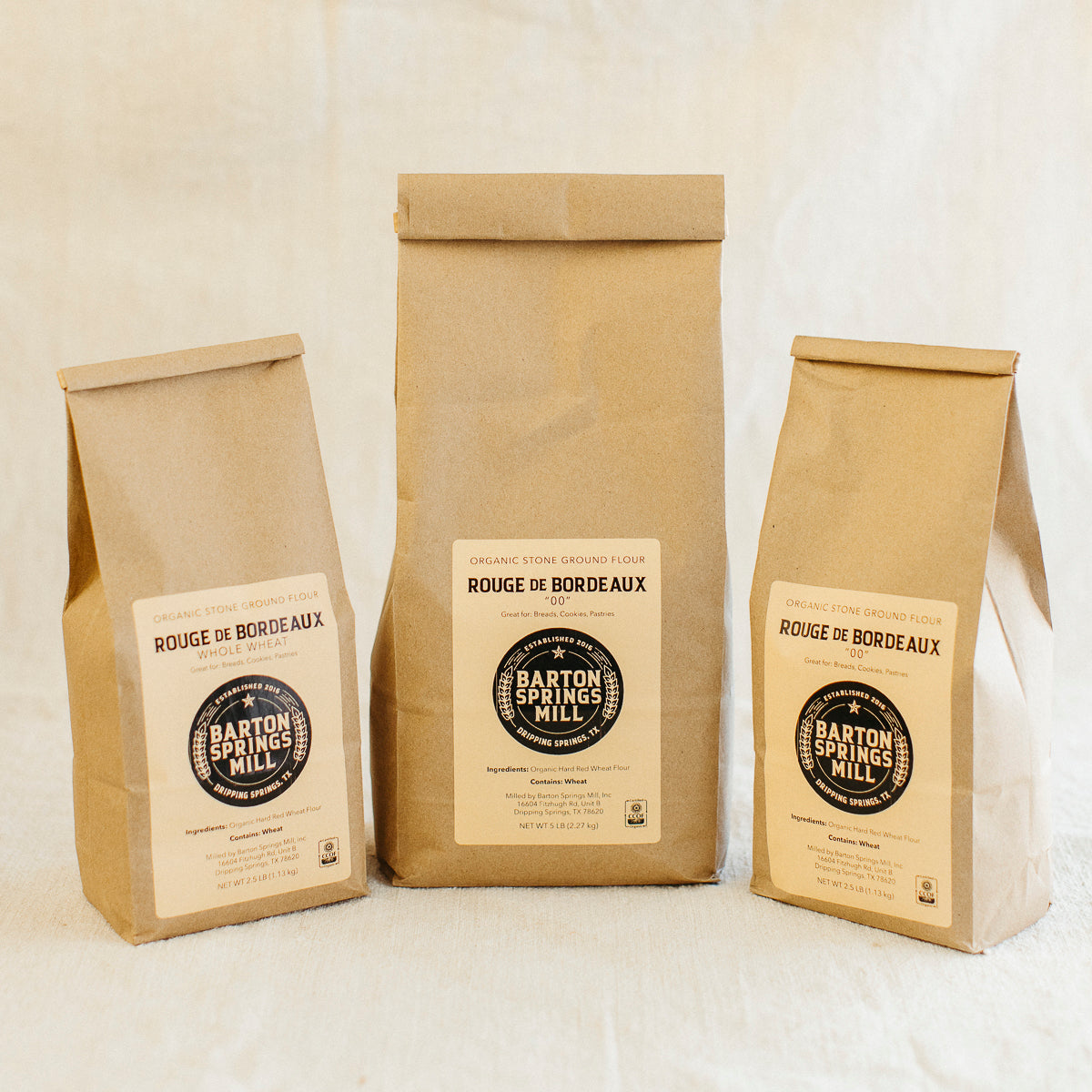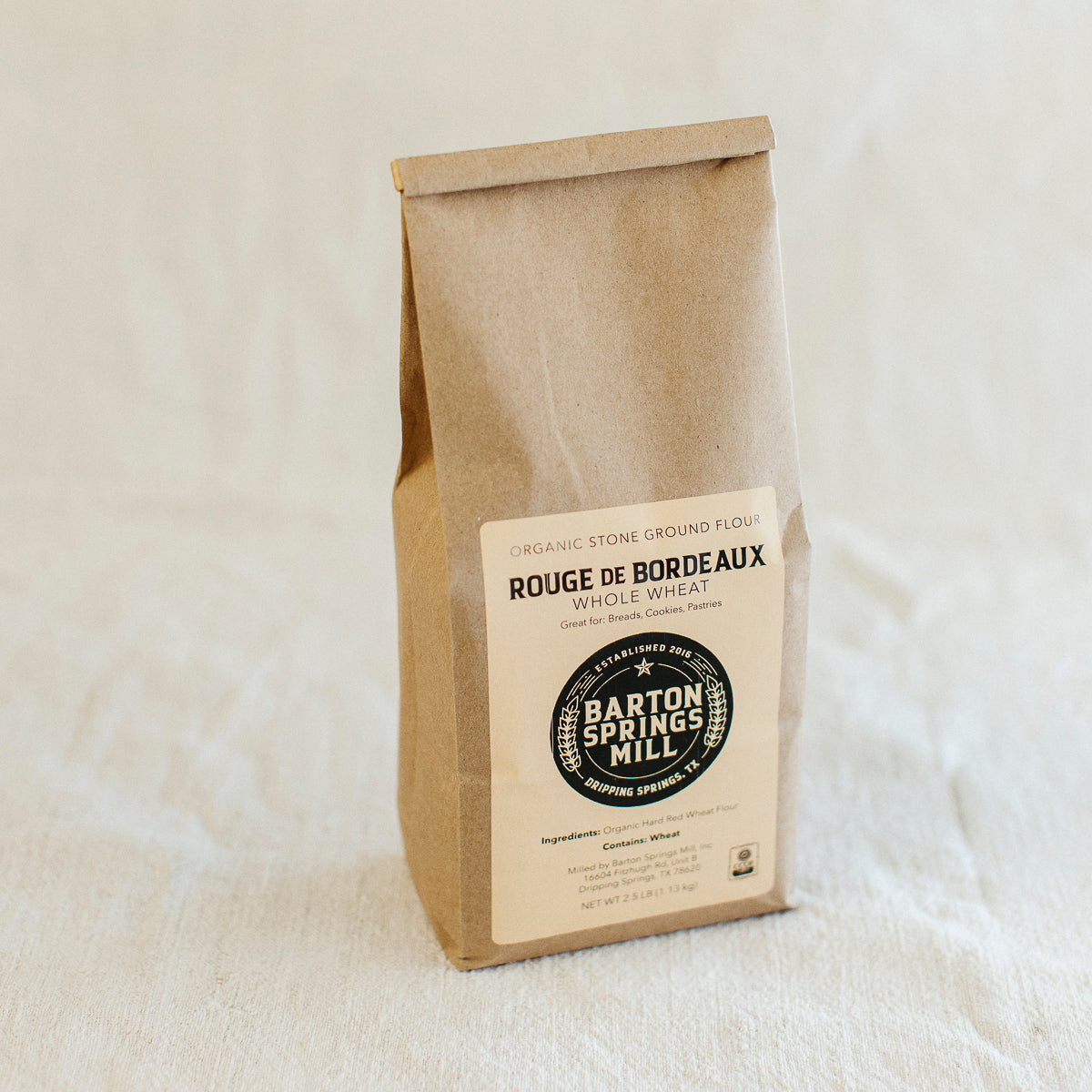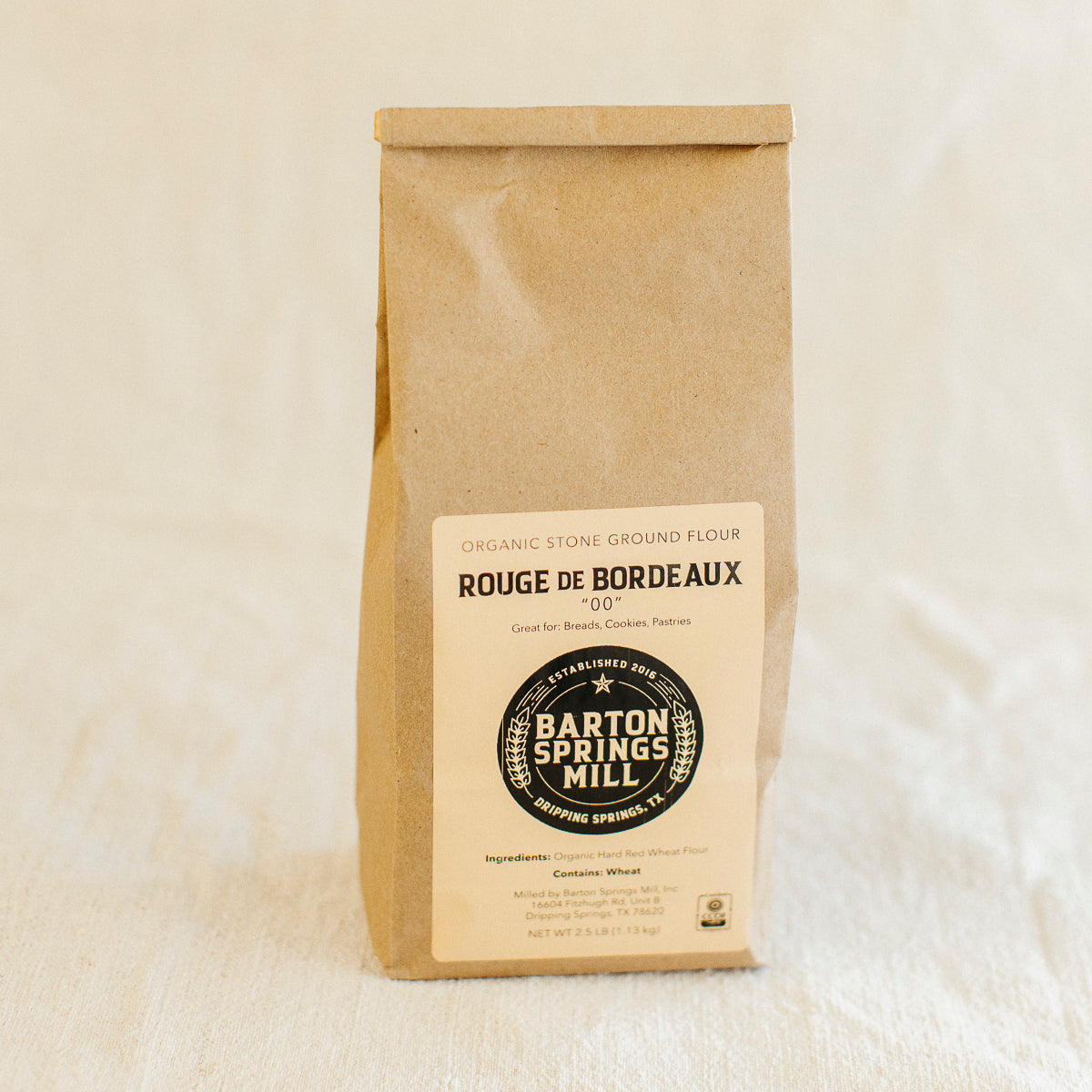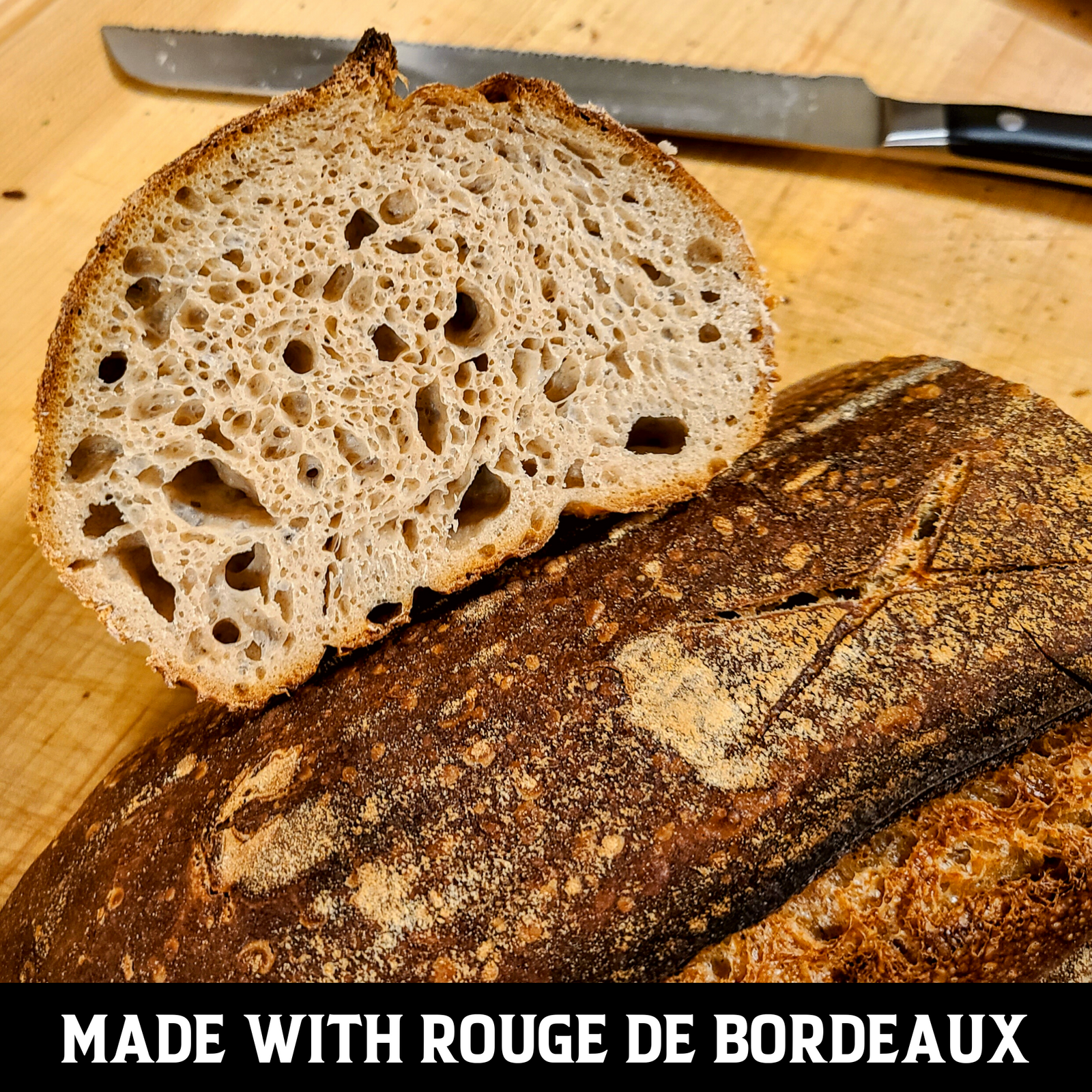Order by 12/9 for Christmas delivery.
Order by 12/9 for Christmas delivery.
Add description, images, menus and links to your mega menu
A column with no settings can be used as a spacer
Link to your collections, sales and even external links
Add up to five columns
Add description, images, menus and links to your mega menu
A column with no settings can be used as a spacer
Link to your collections, sales and even external links
Add up to five columns
Add description, images, menus and links to your mega menu
A column with no settings can be used as a spacer
Link to your collections, sales and even external links
Add up to five columns
Add description, images, menus and links to your mega menu
A column with no settings can be used as a spacer
Link to your collections, sales and even external links
Add up to five columns
Rouge de Bordeaux Flour (certified organic)
This 19th century bread flour was the favorite of French bakers for generations. Breads from Rouge de Bordeaux have a rich, nutty flavor with aromas of cinnamon and baking spice. It can be used as bread flour in any recipe.
- Class: Hard Red Winter Wheat
- Grown in: Montross, Va. by Wolf Farms Organics
- This is a Heritage, Landrace grain. Learn more.
- Available types: Whole Berry, Whole Wheat Flour, ‘00’ Flour What is ’00’?
- Protein: 12.5%
- Flavor profile: Nutty and earthy with subtle notes of cinnamon and baking spice
- We love it in: Artisan Hearth Breads, Brownies, Cookies, Crackers, Muffins, Pizza, Pretzels, Yeasted Rolls and Breads
Rouge de Bordeaux has become a regular favorite in our yeasted wheat sandwich bread. It has a lovely flavor.
This is my very favorite flour from BSM. It’s a flour that has personality without overwhelming whatever you are making—a rich flavor, deep with a delightful hint of cinnamon. This is the flour that lets you know what you’ve been missing with supermarket flour!
Best of all your flour
tried this as partial replacement a couple of times in sourdough and then tried as main bread flour .. very happy with all the results. Flavor was delightful
The flower is so buttery and creamy! It made our bread absolutely delicious!
Rouge de Bordeaux has become a regular favorite in our yeasted wheat sandwich bread. It has a lovely flavor.
This is my very favorite flour from BSM. It’s a flour that has personality without overwhelming whatever you are making—a rich flavor, deep with a delightful hint of cinnamon. This is the flour that lets you know what you’ve been missing with supermarket flour!
Best of all your flour
tried this as partial replacement a couple of times in sourdough and then tried as main bread flour .. very happy with all the results. Flavor was delightful
The flower is so buttery and creamy! It made our bread absolutely delicious!
